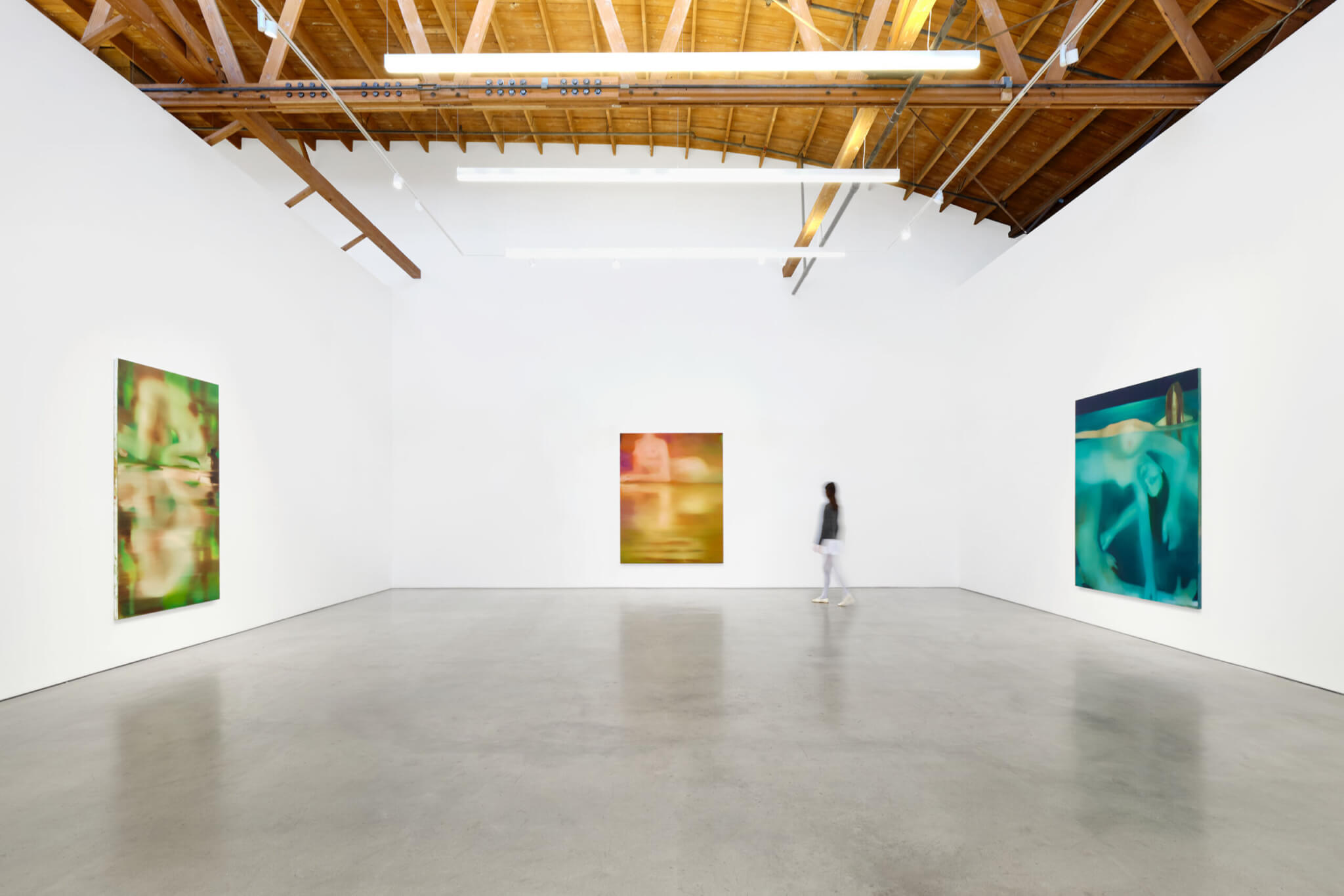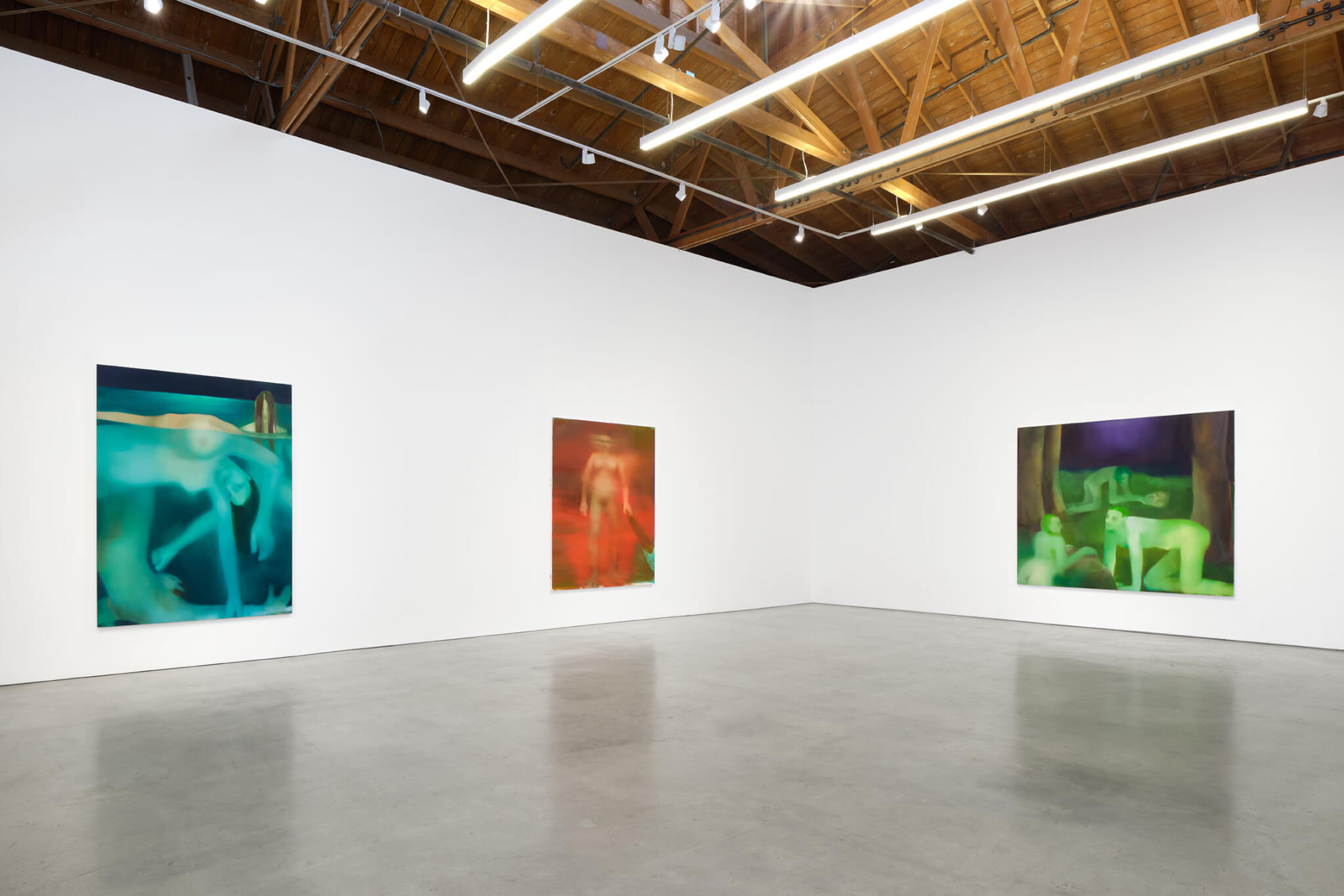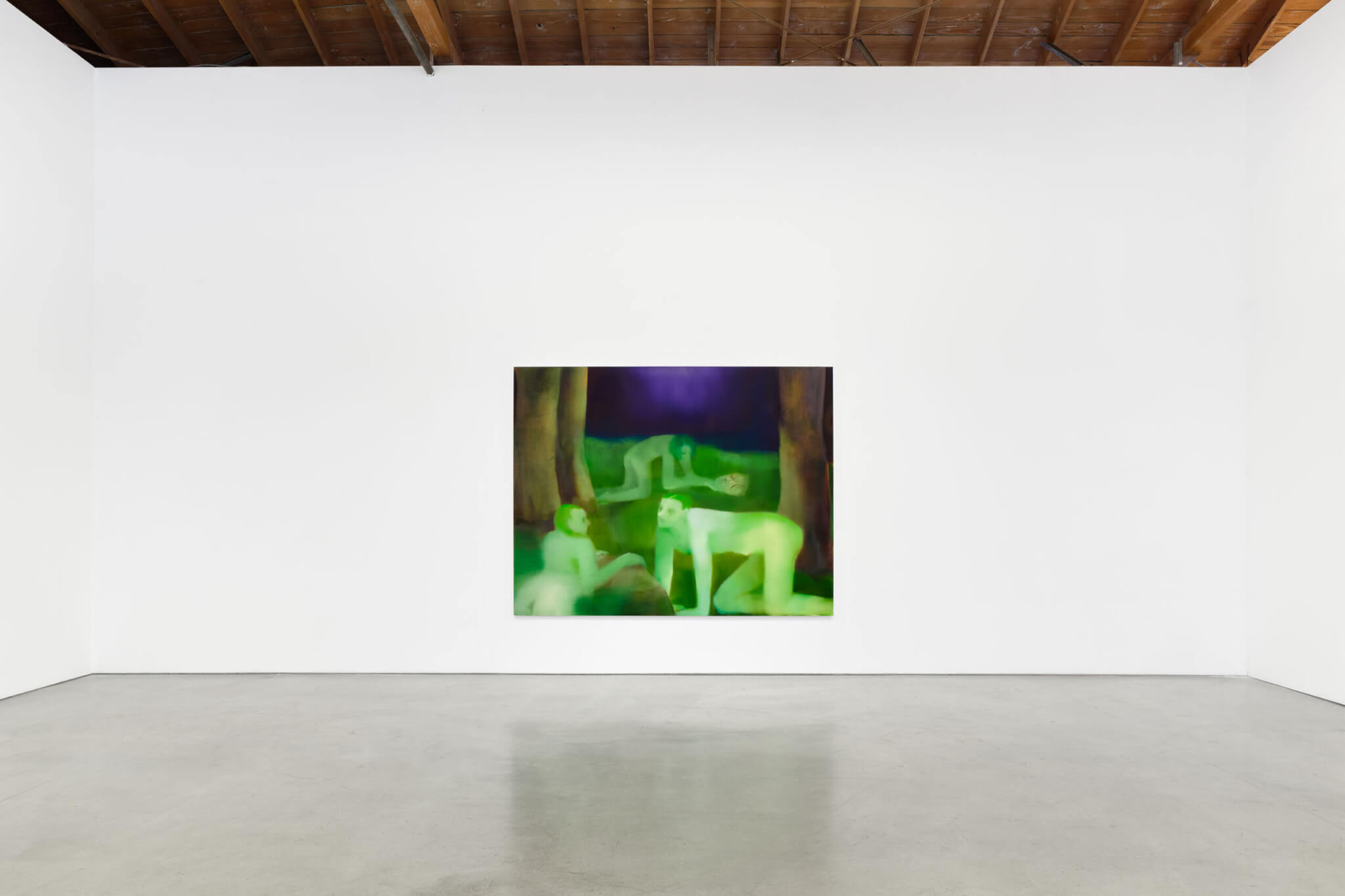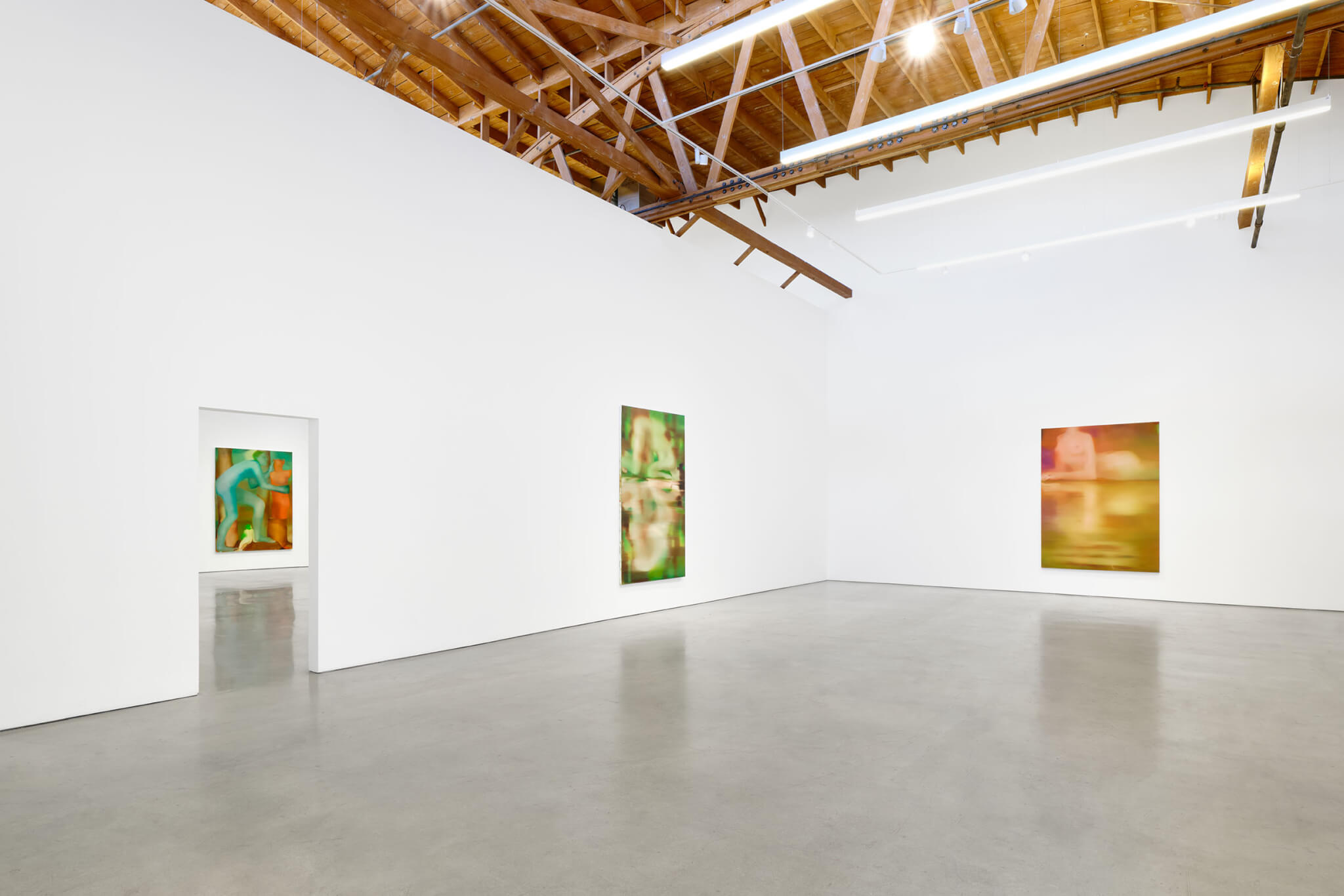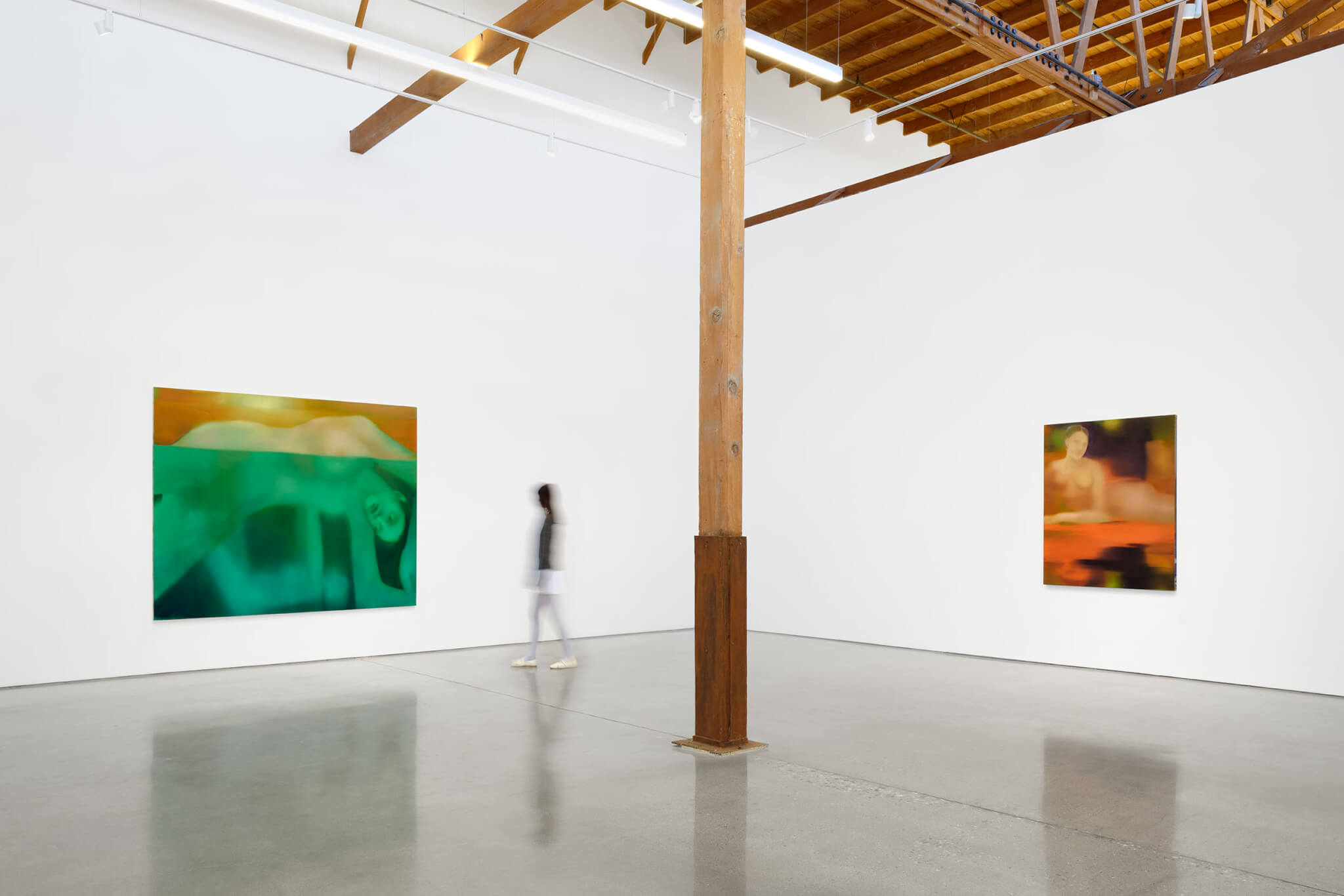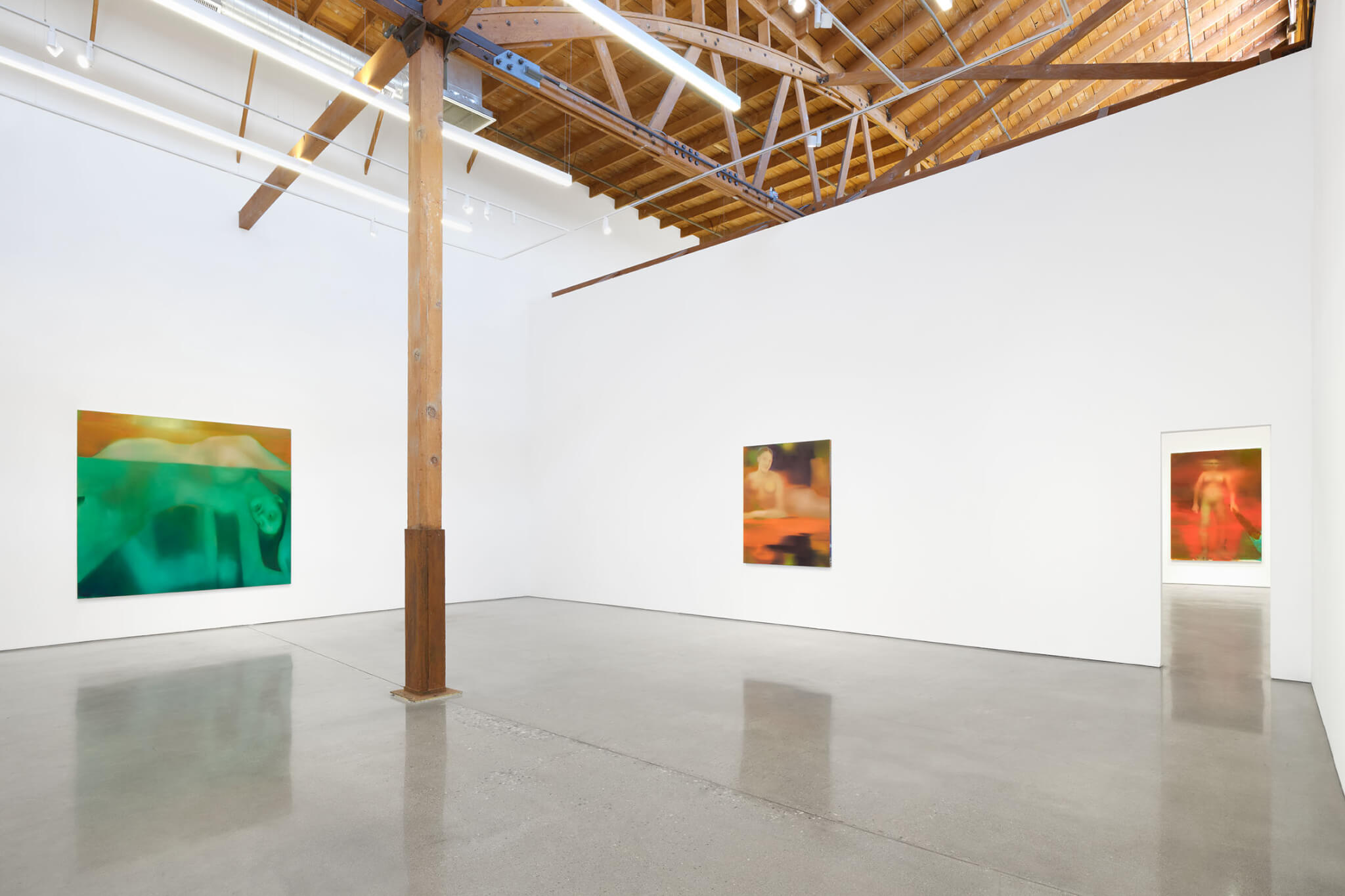Elizabeth Glaessner
Now you're a lake
April 6 – May 11, 2024
2245 E Washington Boulevard, Los Angeles
Press Release
François Ghebaly is proud to present Now you’re a lake, Elizabeth Glaessner’s first exhibition with the gallery at its downtown Los Angeles space.
New York-based artist Elizabeth Glaessner creates vibrant, multi-layered pictorial universes in her paintings. Cast in chromatic swathes of hot and cool, Glaessner’s amorphous figures, evocative poses, and surreal environments blend art historical reference and cultural observation into paintings that pose more questions than answers. In large part, her practice converges on a de-centering of the authority of parable and moral image. Instead, Glaessner embraces ambiguity and improvisation in her work as rejections of absolutism, and experimental factors to test the limits of interpretation.
In her latest exhibition, Glaessner puts forward a body of new work interested in comparative notions of threshold. Long important in her visual imaginary are waterlines and other environmental in-betweens, which become symbols for the divides between conscious and subconscious, id and ego, real and illusory. In Now you’re a lake, the omnipresent lake is as much a character in each painting as Glaessner’s individual subjects. Bodies of water act as strange, bifurcating sites of reflection and inversion. Importantly, they encompass the actual visual perspective from which viewers almost always encounter the figures in each painting. For the artist, this arrangement points to a more pivotal threshold considered in the show: the interpretive space both made available and foreclosed to the viewer through composition, and, by extension, the black-box of our own sense-making. In this regard, the conceit of much of Glaessner’s painting is one of indexicality, to incline, interrupt, and even disabuse viewers of their interpretive precepts—namely the allocations of virtue, heroism, antipathy, or truth—by way of narrative ambiguity. This is, of course, in addition to the tension and counterpoint embedded in Glaessner’s paint itself.
Atop the exhibition’s eponymous body of water, slant retellings of familiar myths take center stage in works like Becoming a Lake (2024) and Head in the Water (2024). The former shows a Narcissus-like figure bent at water’s edge, her face submerged as though escaping into her own reflection. In the latter, Glaessner portrays a sphinx character, a recurring figure in her work, laying prone along a shoreline. The Sphinx’s riddle is famously solved by Oedipus in accounts from Ovid, Sophocles, Hesiod and others, in a resolution that would free the city of Thebes and make Oedipus an ostensible hero, but only accelerates his tragic demise as king. In Glaessner’s version, the sphinx is cleaved at the shoulders by the upper boundary of the painting so as to appear headless, its visage only partly visible in the figure’s blurred reflection on the water. Upon close examination there are two faces reflected, though how they belong to the original sphinx remains unclear.
In another set of paintings, Day into Night, Earth Sucking Sky and Under Toe (2024), Glaessner paints arched bodies that resemble the Egyptian deity Nwt, goddess of the visible sky. In classical representations, she’s often shown in continual intercourse with Geb, or earth, below her. Here, Glaessner interpolates the goddess posture as a figure stretched horizontally along the top of the painting as though comprising a sky both above and below the surface of the water. Her head sinking beneath (from Glaessner, “a slippage, or break in one’s perception of reality”), the figure enters a position of vulnerability or disorientation. Like many works in the show, the assemblage of other limbs and figures contorted beneath the water serve only to further ambiguate the scene, calling to mind the aggregate disquietude of Félix Vallotton’s multi-figure nudes.
“How much,” asks Glaessner, “does the position of the body communicate when placed in different contexts? Can it be both submissive and empowered—human and beast? In my mind, these figures exist in a sort of murky intermediacy. A purgatory, maybe.”
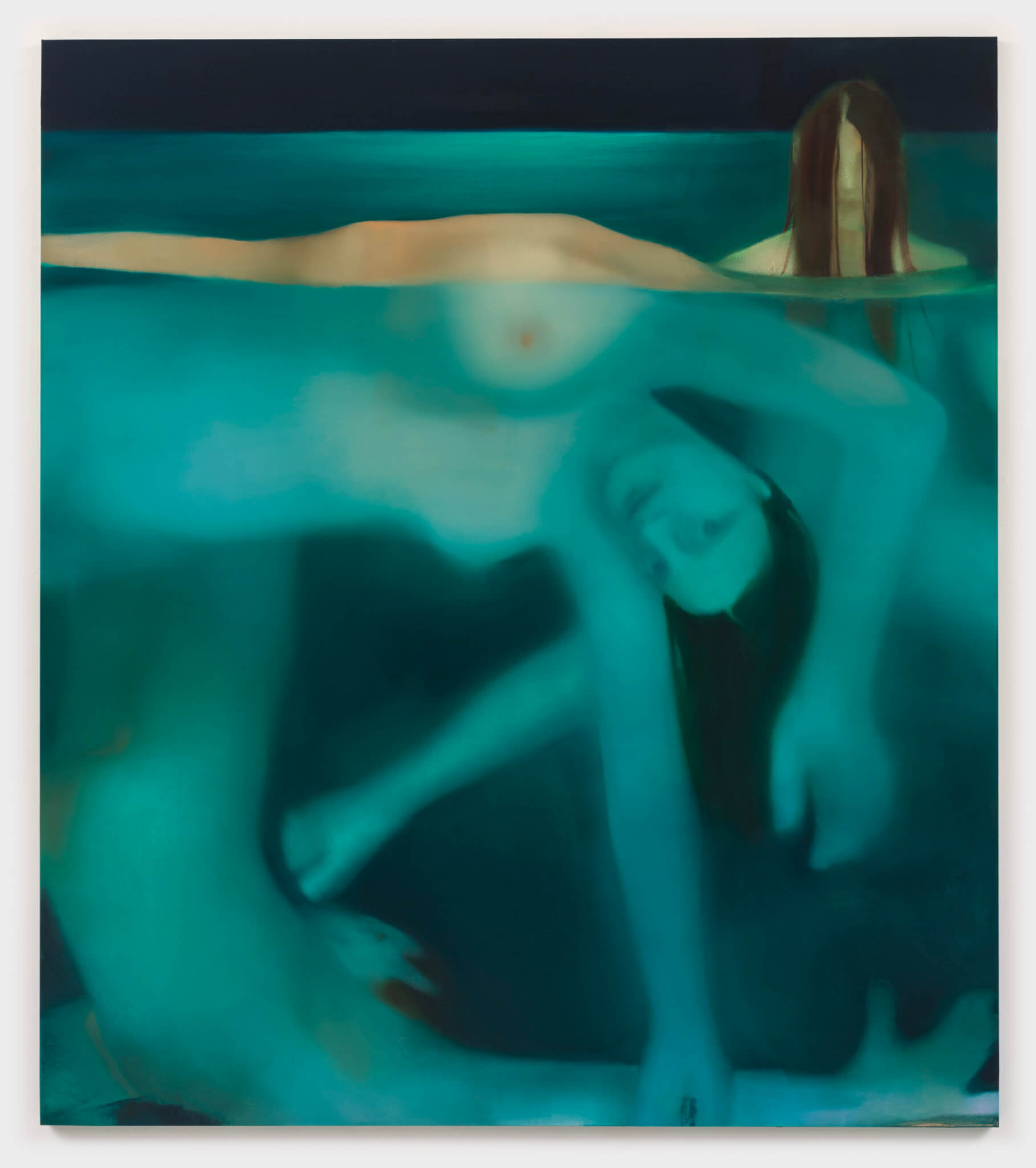

Elizabeth Glaessner, Under Toe, 2024. Oil on linen, 84 x 74 inches (213.5 x 188 cm.)
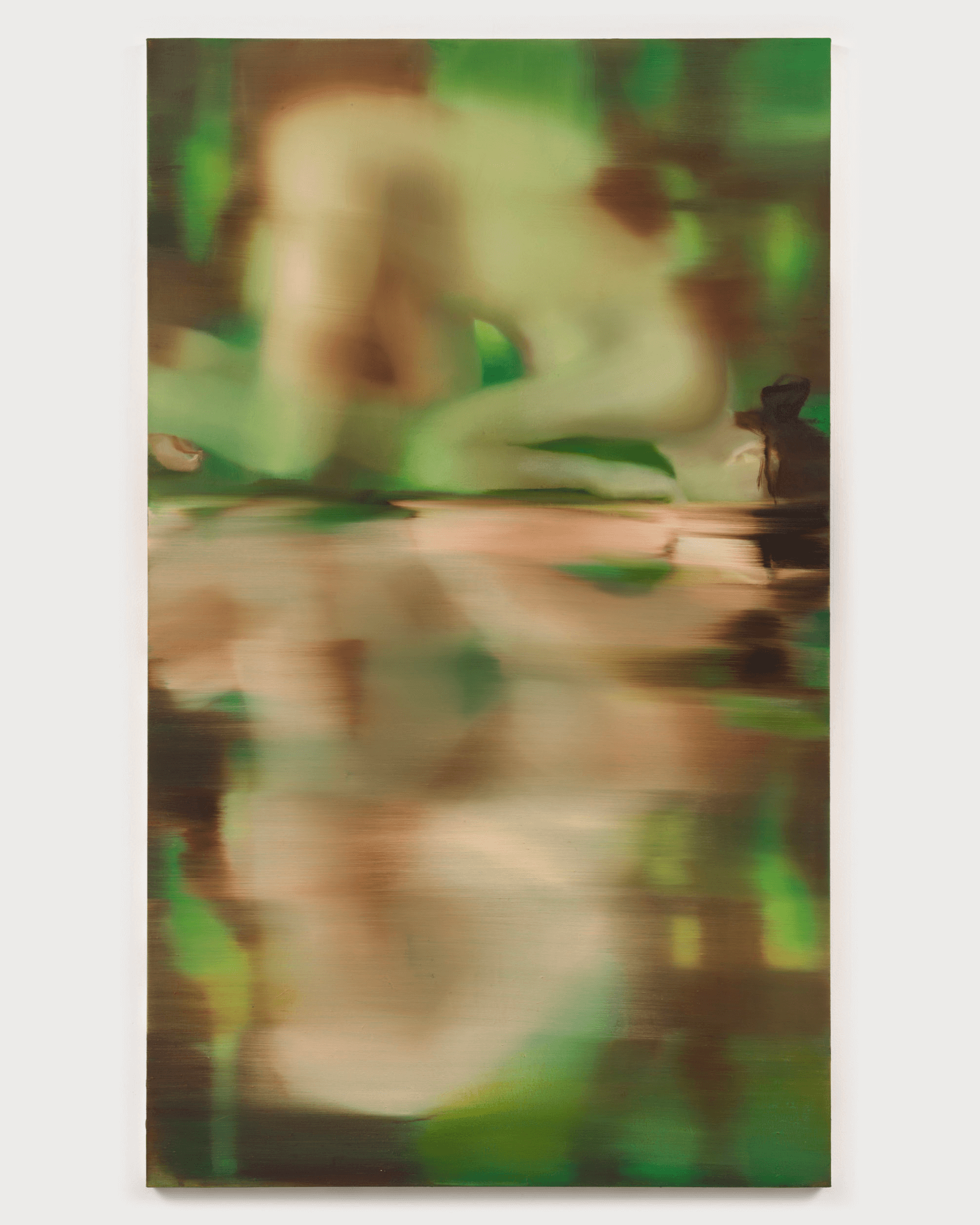

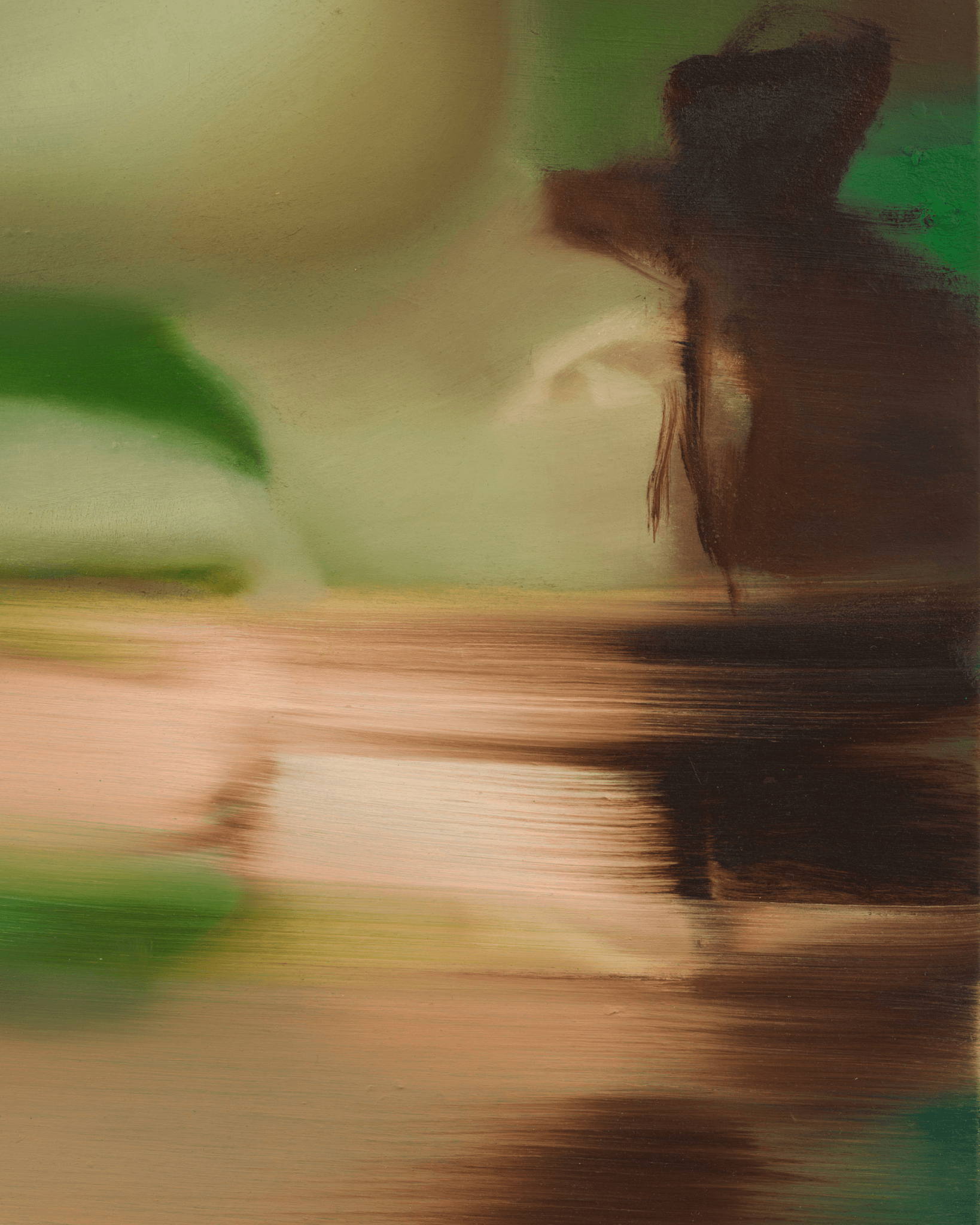

Elizabeth Glaessner, Becoming a Lake, 2024. Oil on linen, 84 x 50 inches (213.5 x 127 cm.)
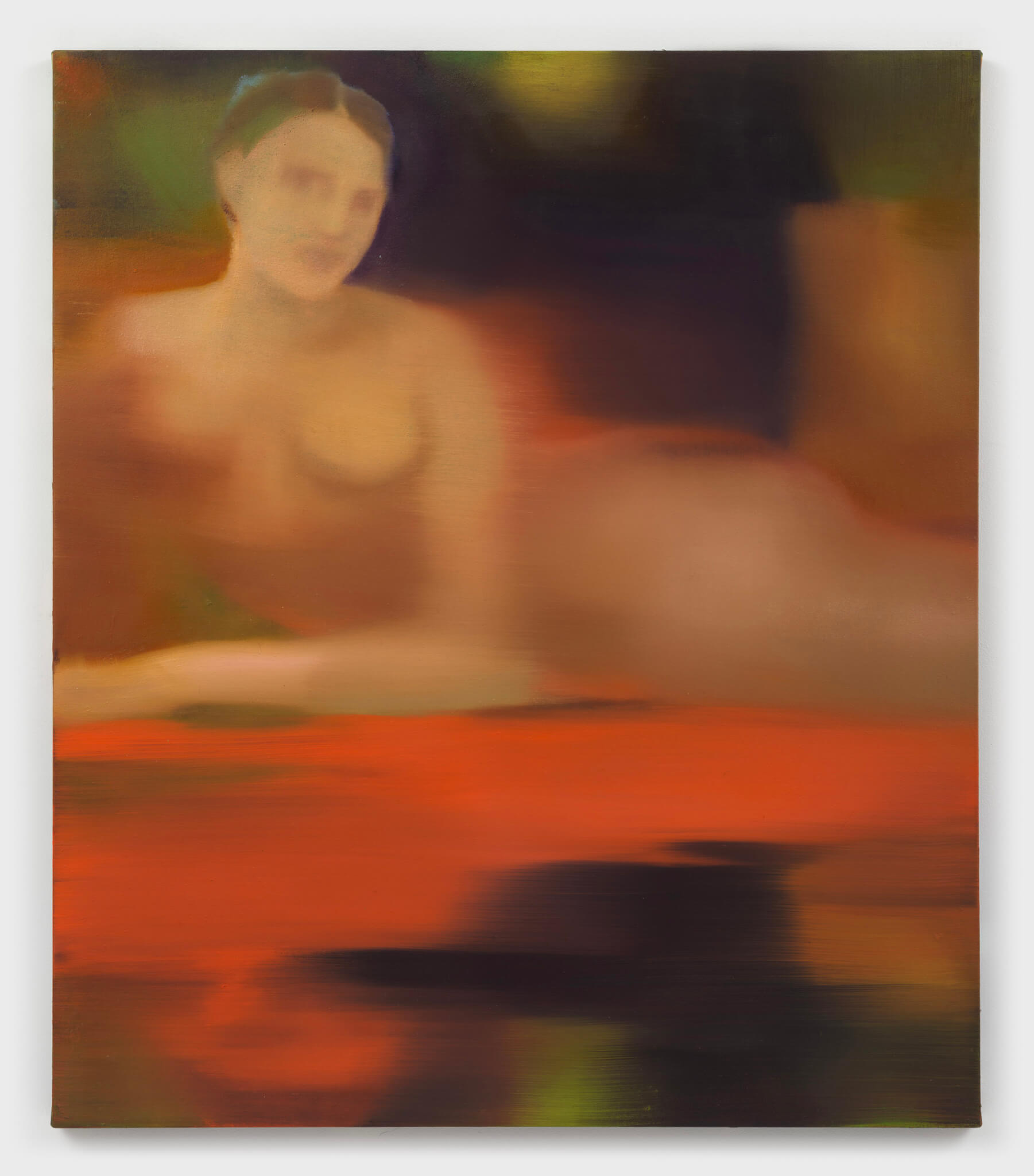

Elizabeth Glaessner, Death Mask, 2024. Oil on linen, 58 x 50 inches (147.5 x 127 cm.)


Elizabeth Glaessner, Grass Play, 2024. Oil on linen, 78 x 100 inches (198 x 254 cm)


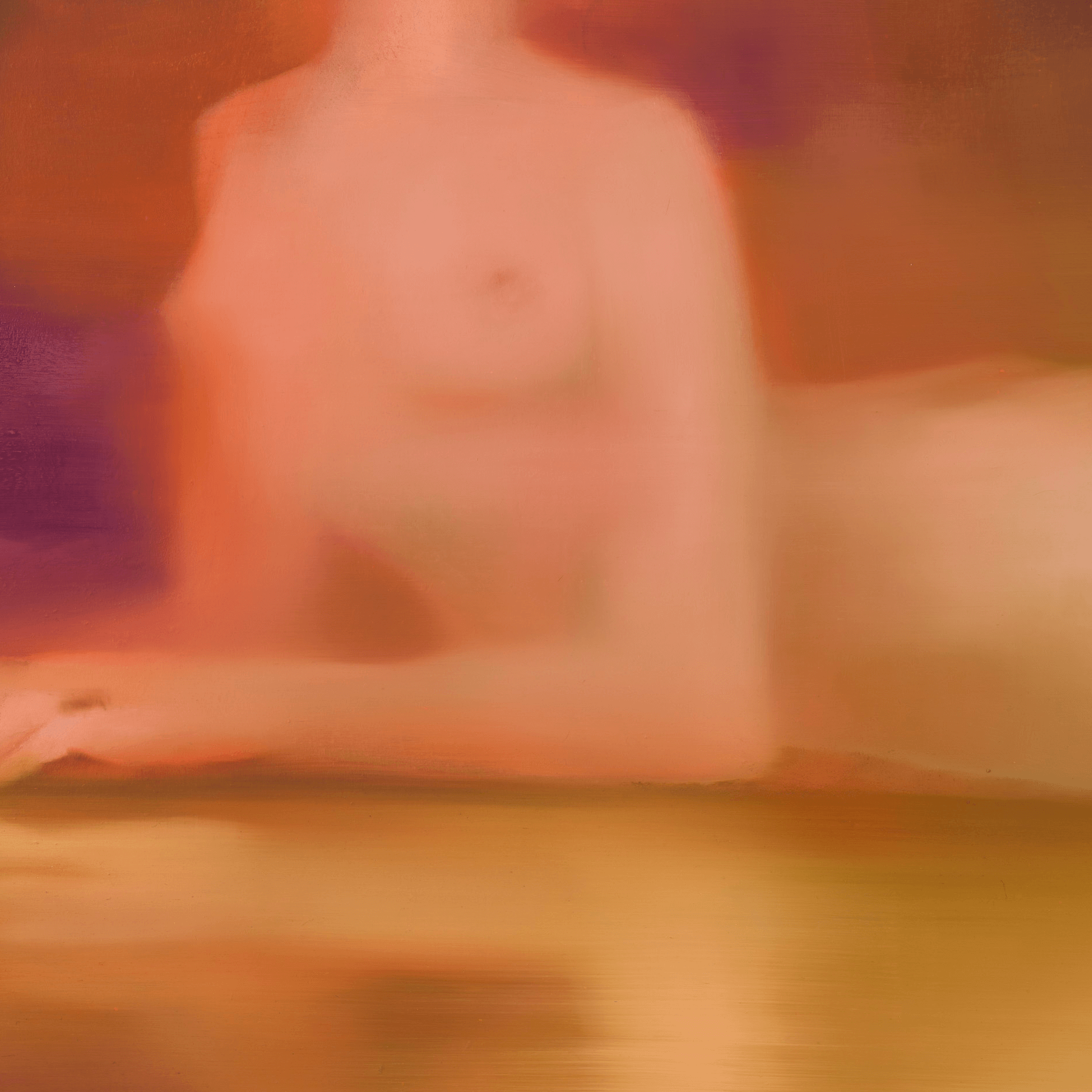

Elizabeth Glaessner, Head in the Water, 2024. Oil on linen, 84 x 66 inches (213.5 x 168 cm.)
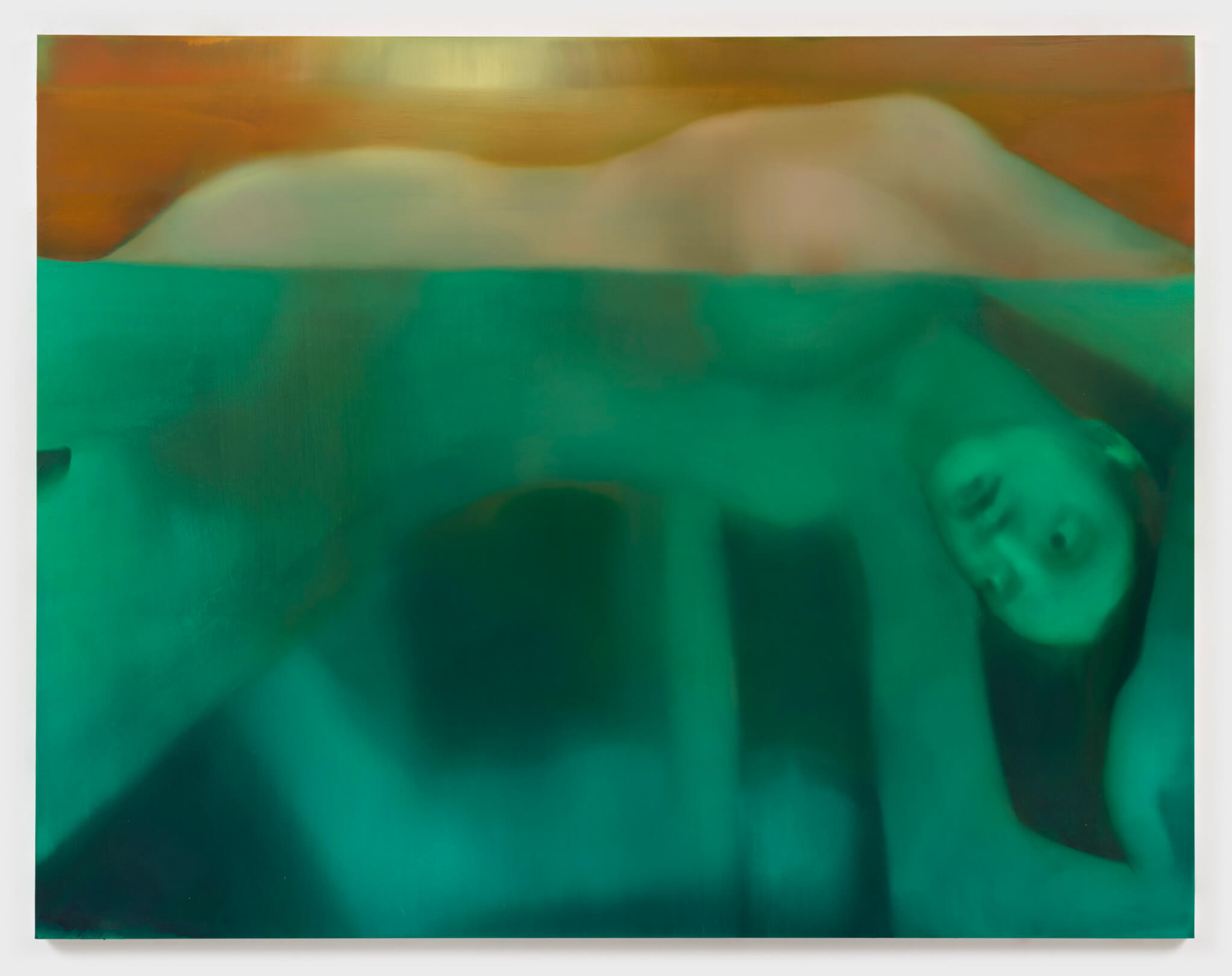

Elizabeth Glaessner, Day into Night, Earth Sucking Sky, 2024. Oil on linen, 78 x 100 inches (198 x 254 cm.)
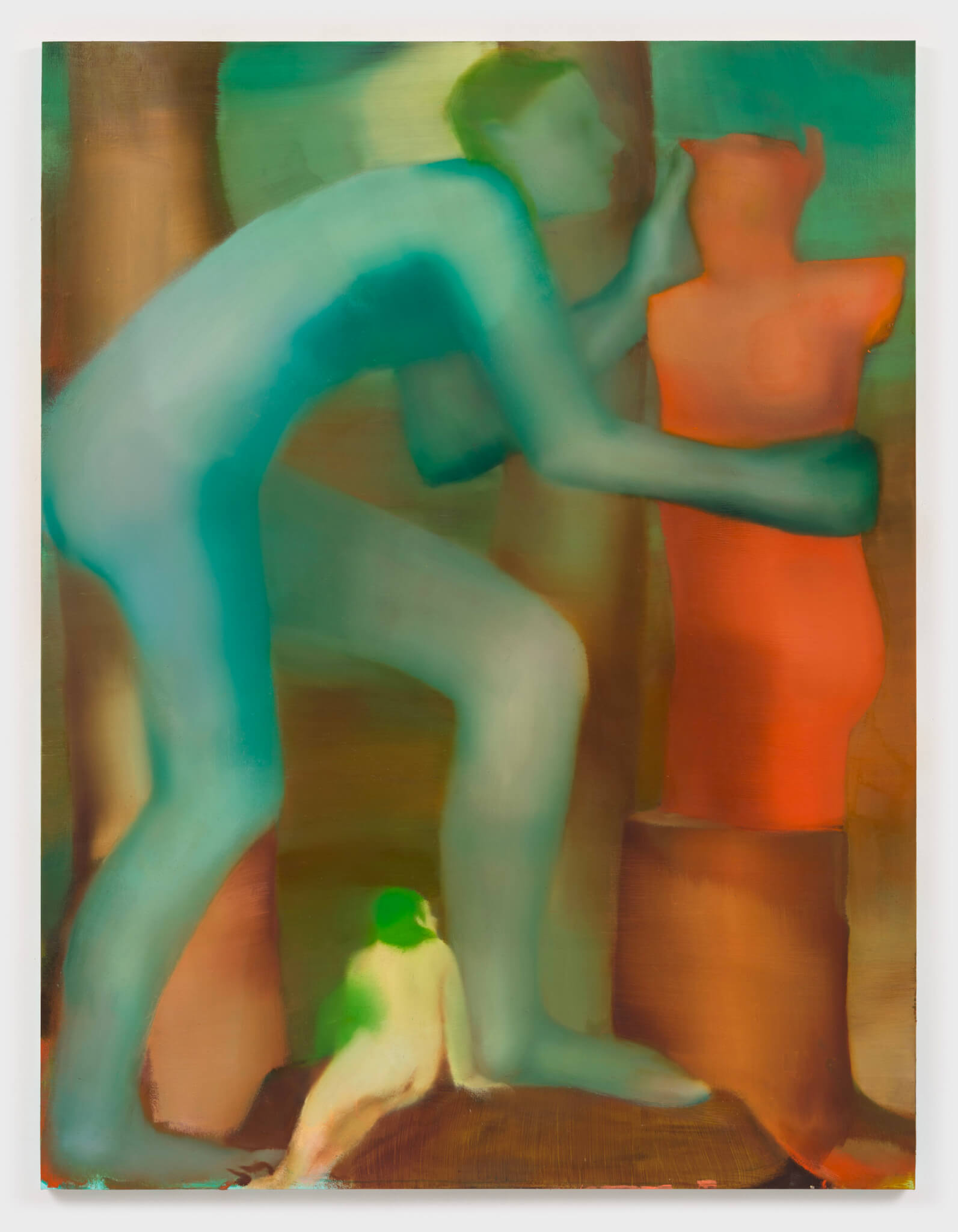

Elizabeth Glaessner, Analysis, 2024. Oil on linen, 84 x 64 inches (213.5 x 163 cm.)
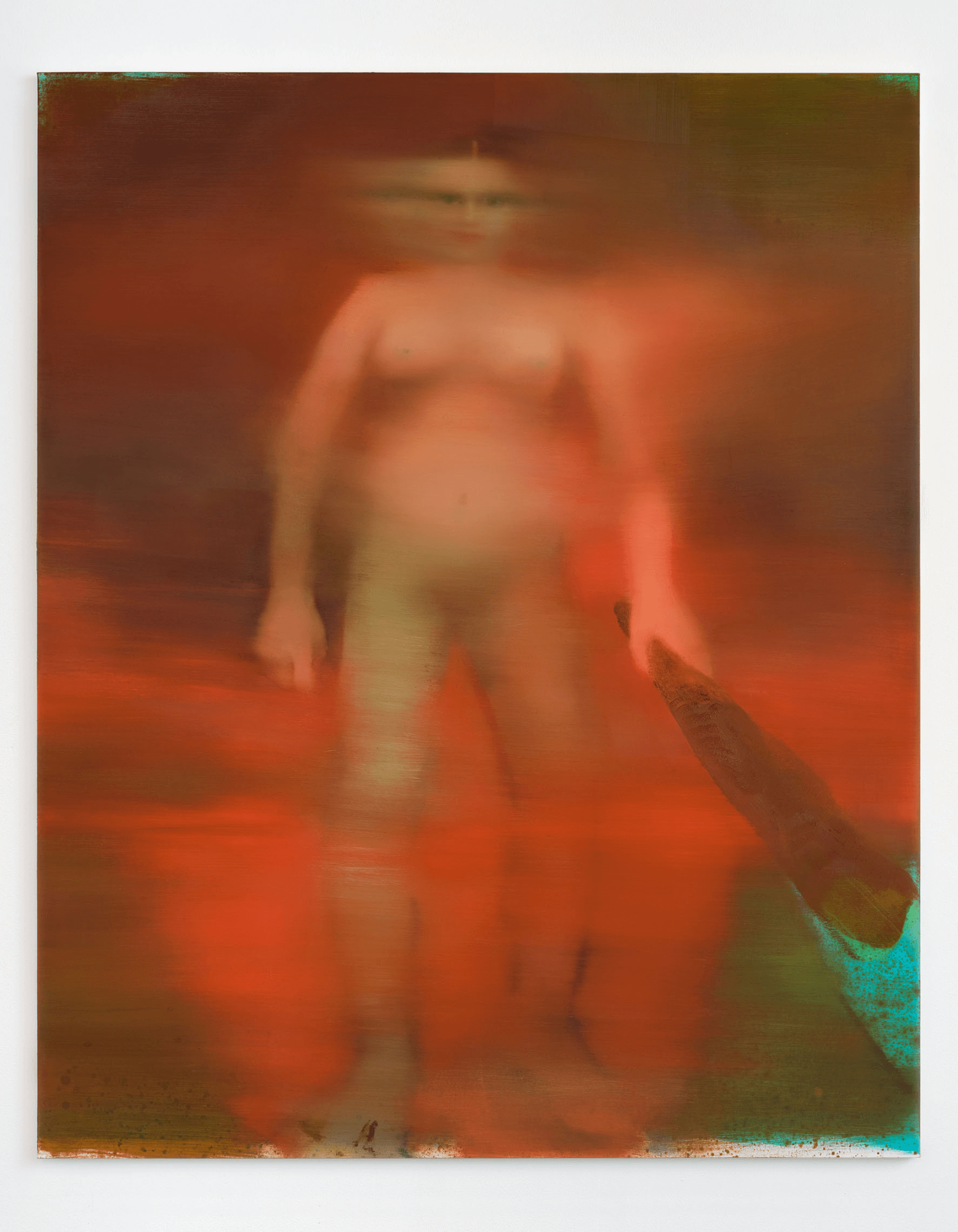

Elizabeth Glaessner, Bodyguard, 2024. Oil on linen, 80 x 65 inches (203 x 165 cm.)
